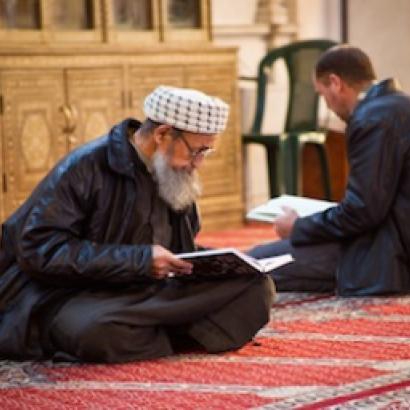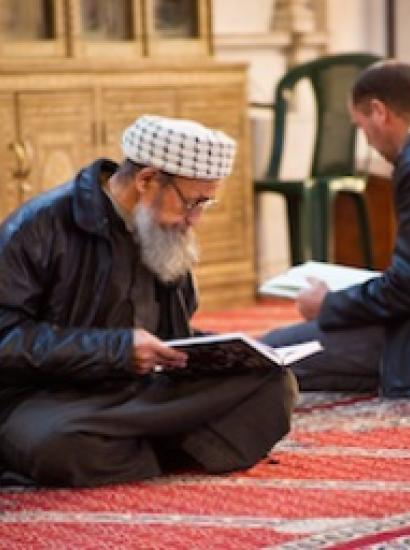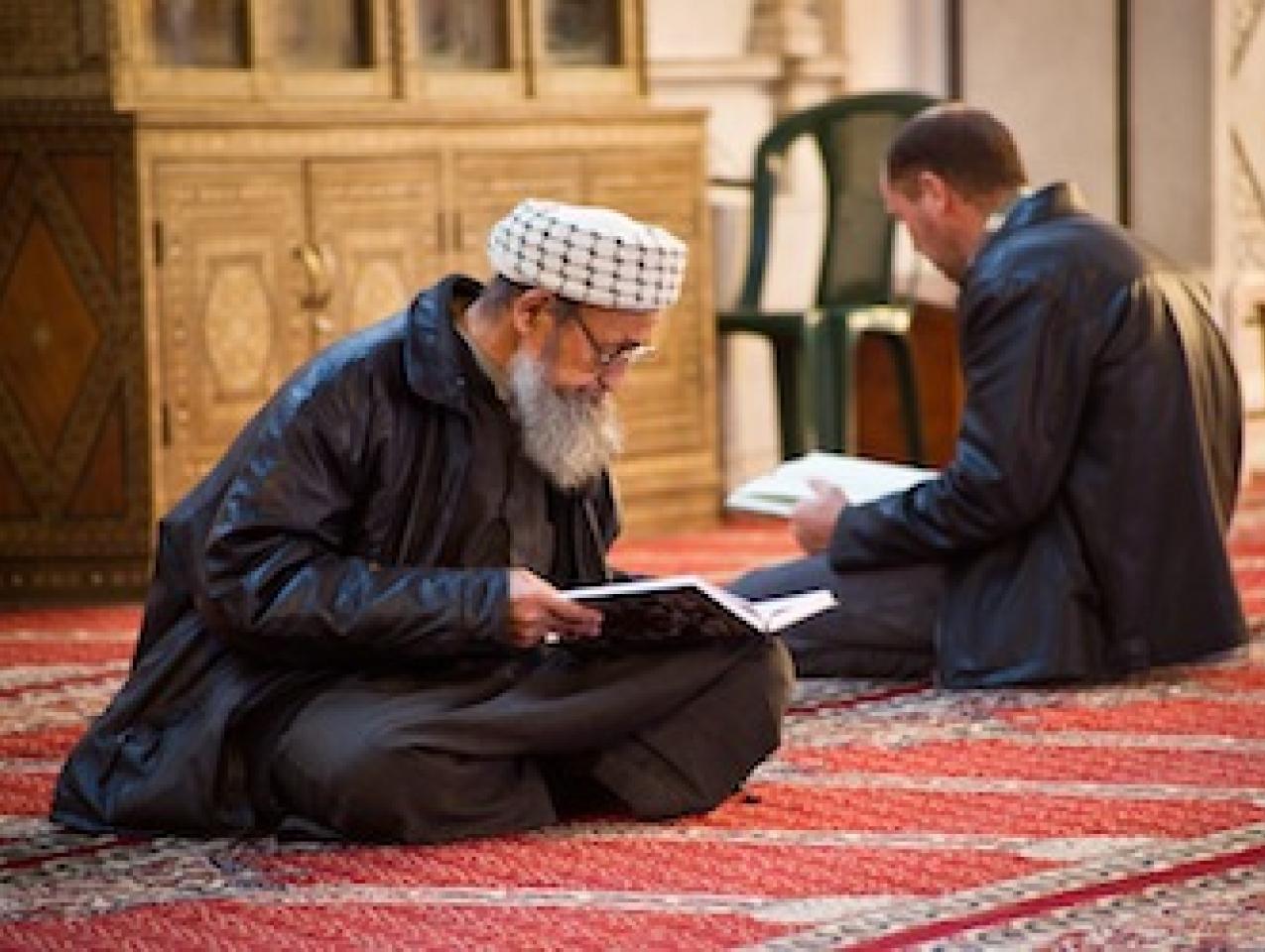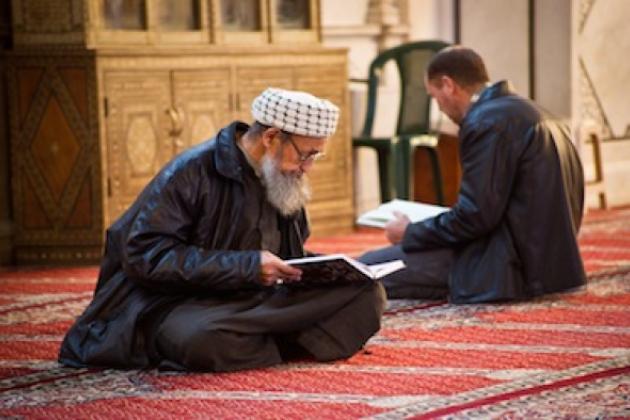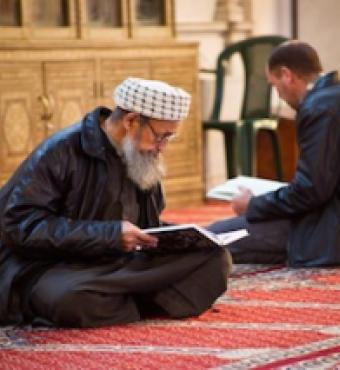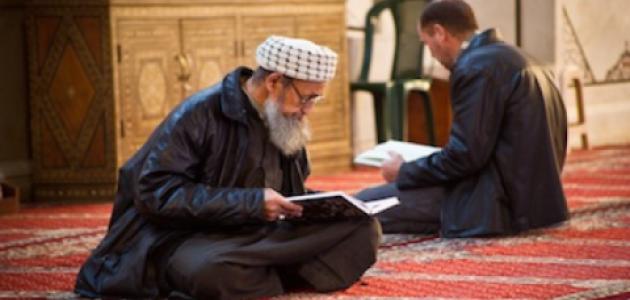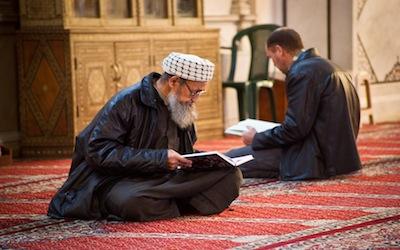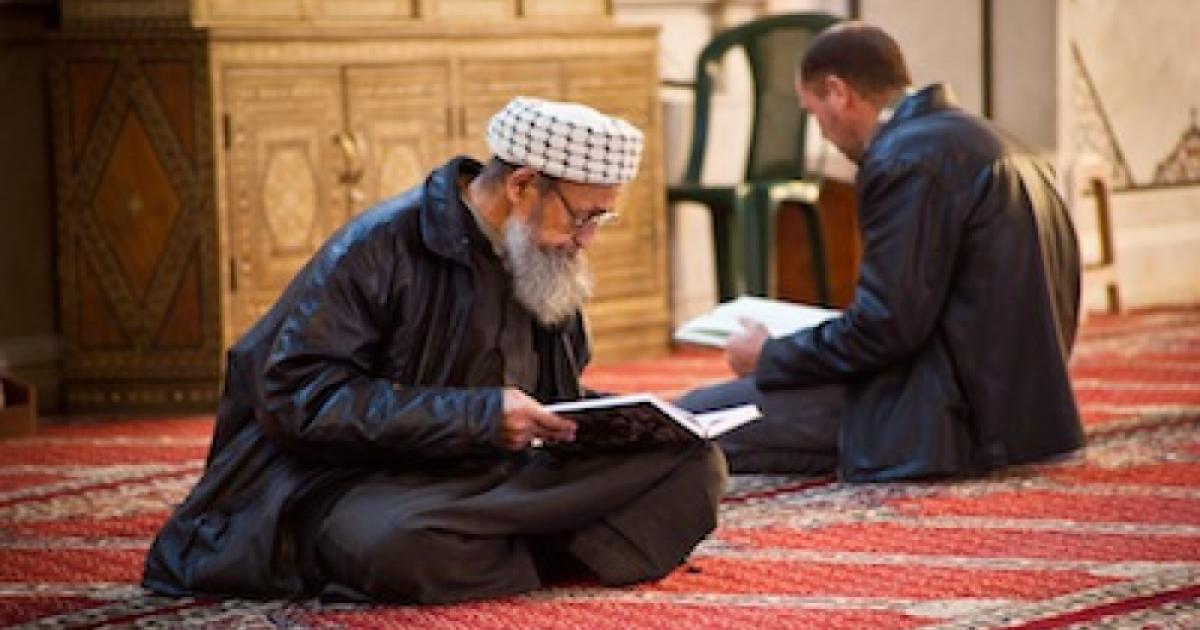- International Affairs
- US Foreign Policy
Editor’s note: This essay is adapted from the Hoover Press book, Syria Through Jihadist Eyes: A Perfect Enemy, which is a publication of the Hoover Institution's Working Group on Islamism and the International Order.
The political hurricane in Syria which erupted in March of 2011 caught the Obama administration flat-footed and unprepared. For nearly two years, since the beginning of his administration, President Obama had set out to normalize relations with that dictatorial regime. He was sure that engaging the regime in Damascus would deliver political dividends where the Bush strategy of taking on Syria, beginning in 2004-2005, had failed. But now the defect of the Obama policy of engagement has been laid bare.
***
Syria borders five of the hottest hot spots in the Middle East: Iraq, Turkey, Lebanon, Israel, and Jordan. But more important are that ancient nation’s place in history and its religious make-up. Historically, Syria is a place where the two leading branches of Islam, the Sunnis and the Shi’as, have often clashed. Religiously, Syria’s population is mostly Sunni; however, members of a small sect that identifies itself with the minority Shi’as have been in power for forty years. These are the Nusayri-‘Alawites, whose obscure history, secretive religious practices, and role as the target of Sunni fatwas over many centuries combine with their powerful position in modern Syria to provide a potential flashpoint for jihadists from around the world.
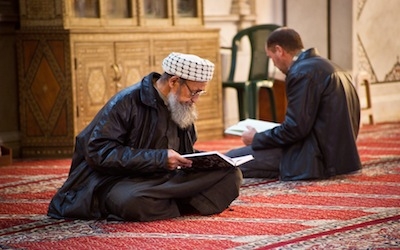
Umayyad Mosque. Damascus, Syria. Photo credit: sharnik, via flickr.
"Imagine if the Native Americans managed to regroup and to reoccupy America . . . and then you will know what Syrian President Hafez al-Asad managed to do with the ‘Alawites." This quotation, from a high-ranking Christian Syrian official, highlights the feeling among many Syrians that the capture of power in their country by the Nusayri-‘Alawites, a historically rural minority, is a fluke of history. The orthodox Sunnis were never supposed to be ruled over by Shi’a religious "dissenters" (as Sunnis depict the Shi’a), much less by a marginal and browbeaten heterodox Shi’a group such as the Nusayri-‘Alawites—a group that was historically considered to be outside of the mainstream by Sunnis and Shi’as alike. As one Sunni Islamist tract put it, it is against "the logic of things . . . The [Nusayri-‘Alawite] minority has forgotten itself and is ignoring the facts of history."
The Nusayri-‘Alawites, still the ruling class in Syria after nearly four decades, comprise no more than 15 percent of the population, but they lord it over a Sunni Arab majority of at least 55 percent. A Sunni loyalist elite, which enjoys what one scholar called "derivative power" devolved onto it by the Nusayri-‘Alawites, is a critical component of the power structure and colludes in this abnormal power balance, with the aim of obscuring the blatant sectarianism of the regime. However, for other Sunnis, this facade of shared power is not enough to allay their wrath. It is the aim of this paper to consider how the "jihadists," the global fraternity of militant Islamists, understand this historical aberration and how they seek to address it. The conclusion is that they will strive to correct it, violently.
In a speech produced four months before his death, Abu Musa’ab al-Zarqawi—the leader of the jihad in Iraq since 2003 who introduced revolutionary changes in jihadist tactics and ideology up to his death by a U.S. airstrike in June 2006—married traditional Wahhabi-inspired anti-Shi’ism to the strategic goals of worldwide jihad. Al-Zarqawi concluded that one of the goals of jihad should be the whole-sale annihilation of Shi’as in theaters of war in which the jihadists are engaged, as a precursor to fighting the West and Israel. Al-Zarqawi argued that the Shi’as constituted the internal enemy within Islam, tantamount to a "fifth column," forever enabling the faith’s enemies from without. Few have pondered the grave implications of al-Zarqawi’s strategic vision for long-term stability in Syria, a country where a hated minority heterodox Shi’a sect rules, and that may become a natural outlet for the hateful, pent-up sectarian energies released by al-Zarqawi.
The political hurricane in Syria caught the Obama administration flat-footed and unprepared.
Al-Zarqawi’s world view is too radical even for traditional Wahhabism, which was loathe to propose wholesale massacre of mainstream Shi’a laypersons, reserving punishment of death to the Shi’a elite only. This was a reluctance that al-Zarqawi felt he needed to address when explaining his "final solution." However, the Nusayri-‘Alawites fall under a different category outside of mainstream Shi’ism; the ideological founts from which the Wahhabis draw inspiration, such as fourteenth-century scholar Ibn Taymiyya, had proposed mass annihilation for the Nusayri-‘Alawites during his time. Al-Zarqawi had to invent doctrinal excuses for exterminating Iraqi Shi’as to assuage Sunni reservations and scruples. With the Nusayri-‘Alawites of Syria, however, there are no holds barred.
For jihadist purposes, the Nusayri-‘Alawites constitute a "perfect enemy" in ideological and strategic aspects, or at least one that is most convenient. Two factors are of particular importance: first, earlier generations of jihadists, spawned by the extremist wing of the Syrian Muslim Brethren, had tried to confront the Syrian regime; and second, Syria has great symbolic and strategic value for Sunni Islam. Therefore, it is conceivable that the Zarqawists who have been active in Iraq and elsewhere may direct their talents and resources toward fomenting an anti-Nusayri-‘Alawite jihad in Syria.
The Legacy of Textual Incitements to Jihad
Ibn Taymiyya (1263–1328), by far the most important source of inspiration for today’s jihadists, lived in very difficult times for orthodox Islam. A scion of a family displaced from northern Syria to Damascus by the Mongol hordes, he observed that Islam as he understood it and believed in it had been under attack and undermined for several centuries. By the time he picked up a pen, the external threat had been checked and it was imperative upon a resurgent orthodoxy to confront the internal heresies that had sprung up during the past chaos. Chief among his heretical targets were the Nusayri-‘Alawites. He believed they represented a threat, one dangerous enough to put an end to Sunnism, and one that must be stamped out.
It is no accident that Sunni revivalists in the twentieth-century turned to his words for succor and guidance when confronted by circumstances similar to those witnessed by Ibn Taymiyya. Similarly in modern times, when Nusayri-‘Alawites were recast as a threat to Sunnism, Ibn Taymiyya was trotted out to cast the sectarians as outside the faith, and to make the point that drastic actions, amounting to annihilation, were warranted. For modern jihadists, no other Muslim thinker commands the amount of reverence that Ibn Taymiyya does. The fact that Ibn Taymiyya armed the jihadists with a blueprint as to how to handle a Nusayri-‘Alawite threat releases them from the task of coming up with a doctrinally sound argument for why drastic measures are now warranted. His word is akin to scripture, and he has shown them the way forward.
Three fatwas are attributed to Ibn Taymiyya regarding the Nusayri-‘Alawites. In each, he sought to establish a relevant Islamic precedent. No chronological order can be discerned, but it is likely that the first fatwa dealt with such questions as the sect’s deification of the Prophet Muhammad’s son-in-law, Ali ibn Abi Taleb; the second fatwa dealt with whether Muslims can intermarry with members of the sect or allow them to be buried in Muslim cemeteries; and the third dealt with whether they could be trusted with the protection of Islamic lands against non-Muslims. The questioner also asks whether their blood and wealth are sanctioned for the taking and whether a Nusayri-‘Alawite fighting against the enemy, in that case the Crusaders, is considered a murabit, or holy warrior holding territory at the edges of the land of Islam. It is likely that this fatwa was commissioned in order to mobilize support for the Mameluke raids into Kisrawan, in Lebanon, and in the Dhinniyah mountains east of Tripoli, areas that were seemingly settled by heterodox sects, chief among them the Nusayri-‘Alawites, in 1305 AD.
For modern jihadists, no other Muslim thinker commands the amount of reverence that Ibn Taymiyya does.
Irrespective of the errors that Ibn Taymiyya made in identifying the tenets of Nusayri-‘Alawism, or in confusing them with other sects, his fatwa cast the Nusayri-‘Alawites among the sects whose danger to Islam is greater than that of the Mongols or the Crusaders. He characterized them as seeking to identify themselves as mainstream Shi’as, whereas in reality "they do not believe in Allah, or [Muhammad], or the [Koran]" and disregard all the obligations of being a Muslim with the excuse that esoteric knowledge exempts them from praying, fasting, or making the pilgrimage to Mecca. As such, precedent places them among the kuffar (unbelievers) and the heretics, and those who reject Islam, which they take to extents “further than that of the Jews and Christians and the Brahmins of India who worship deities.”
Ibn Taymiyya adds a political dimension by stating that groups such as the Nusayri-‘Alawites always ally themselves with the enemies of the Muslims, and that they enabled the Crusaders’ conquest of Jerusalem. "Their religion externally is [Shi’ism] but internally it is pure unbelief." Muslim precedent has ruled that they are not to be coupled with or married, and the meat they slaughter is not halal. They may not be buried in Muslim cemeteries, and they may not be employed to defend Muslim lands, for that would be “like entrusting the wolf to shepherd the lambs.” Their blood and wealth are sanctioned for the taking, and even if they show repentance and follow Islam, their progeny should not be allowed to inherit their wealth, which should revert to the Islamic treasury. Furthermore, their repentance could be a deception, and to make sure that orthodoxy takes hold among them they should be dispersed and monitored, and never employed in the warrior class. Furthermore, religious scholars should live among them to teach them Islam.
The second fatwa concerned both the Druze and the Nusayri-‘Alawites. Ibn Taymiyya found precedent in calling them apostates from Islam, non-Muslim, and neither Jewish nor Christian. It is shorter and more concise, culminating in him saying that,
the unbelief of [the Nusayri-‘Alawites and the Druze] is not questioned by the Muslims, in fact whoever questions their unbelief is himself an unbeliever, for they are not in the category of [Christians and Jews] or polytheists, but rather deceptive unbelievers, it is forbidden to eat their food, their women are to be [taken into concubinage], their money seized, they are heretic apostates whose repentance is not accepted, and they must be killed wherever found, and to be cursed as described . . . their scholars and [notables] must be killed so that they would not lead others astray . . . it is forbidden to sleep with them in their houses, or to walk with them and accompany them, and to attend their funerals if announced, and it is forbidden for rulers to [neglect] what Allah ordered as punishments for them [for the sake of expediency].
The third and final fatwa seemed to have been a response to a messianic insurrection among Nusayri-‘Alawites in 1317. It is no less radical than its predecessors, and even addressed whether young children of the Nusayri-‘Alawites were to be taken as slaves or freed. Ibn Taymiyya asserts that the Nusayri-‘Alawites should be fought even without the prompting or excuse of a false messiah appearing among them or of them being in a state of revolt.
For jihadist purposes, the Nusayri-‘Alawites constitute a "perfect enemy."
Beyond Ibn Taymiyya, the Ottomans, self-styled defenders of Sunni internationalism, commissioned fatwas relating to their struggle against the Shi’a Safavids (rulers of Persia from 1502–1722) that were applicable against the Nusayri-‘Alawites, with whom they began to come into contact as they expanded into Greater Syria in the sixteenth century. But it wasn’t until the nineteenth century that another influential fatwa was rendered against the Nusayri-‘Alawites by Sunni Sufi scholar Muhammad al-Maghribi (1764–1826), based in the Syrian city of Latakia.
A contemporary fatwa cited on a jihadist website was made by Saudi cleric Hmoud bin ‘Aqla’ al-Shu’eibi in 2000 in response to general questions on the Nusayri-‘Alawites and specifically on whether it was permitted to attend their weddings and funerals, and to pray for their dead. Al-Shu’eibi concludes that past scholars had deemed them to be "outside of the [Islamic] faith" and then quotes Ibn Taymiyya, especially in giving a political context for the historical alliance of the Nusayri-‘Alawites with the enemies of Islam. He concluded that it is forbidden to attend their ceremonies or pray for their dead.
Books hostile to Nusayri-‘Alawites fall into two broad categories. The first stems from an Arab Nationalist line that stresses the non-Arab, specifically Persian, elements of their faith or the alleged Persian ancestry of the founders. The second is inspired by Wahhabi hostility to heterodoxy in general. The Iraqi government of Saddam Hussein, then in conflict with the Asad regime, hosted academic conferences in the 1980s and commissioned books to propagate the ethnic "otherness" of the Nusayri-‘Alawites.
An example of a Wahhabi book, Al-Nusayriyya, that is readily available on several jihadist websites was authored by Saudi cleric ‘Alawi bin Abdel-Qadir al-Saqqaf as part of a series attacking heterodox groups. Al-Saqqaf begins his tract by alleging that Nusayri-‘Alawites believe they can accrue blessings by hurting Muslims. He also stresses the Persian origins of the sect and says that their hatred of some of the early companions of Muhammad is due to the latter’s destruction of the Persian (Sassanid) Empire in 651 AD—an accusation hurled at Shi’as in general. The book is a compilation of the origins, beliefs, and practices of the sect as understood from a fundamentalist Sunni perspective. It ends with a summary of all the attempts to rectify the "wickedness": of the Nusayri-‘Alawites, all to no avail.








